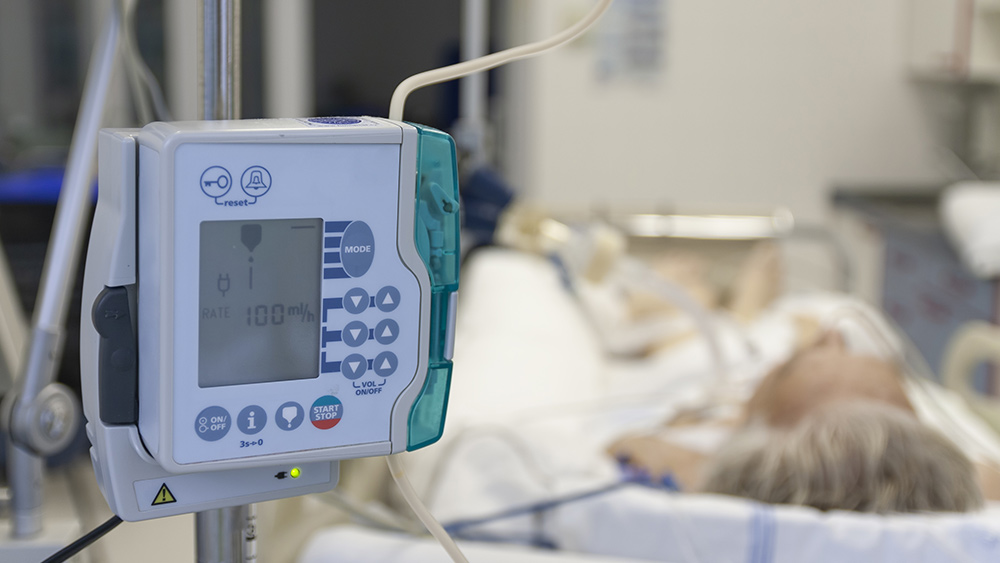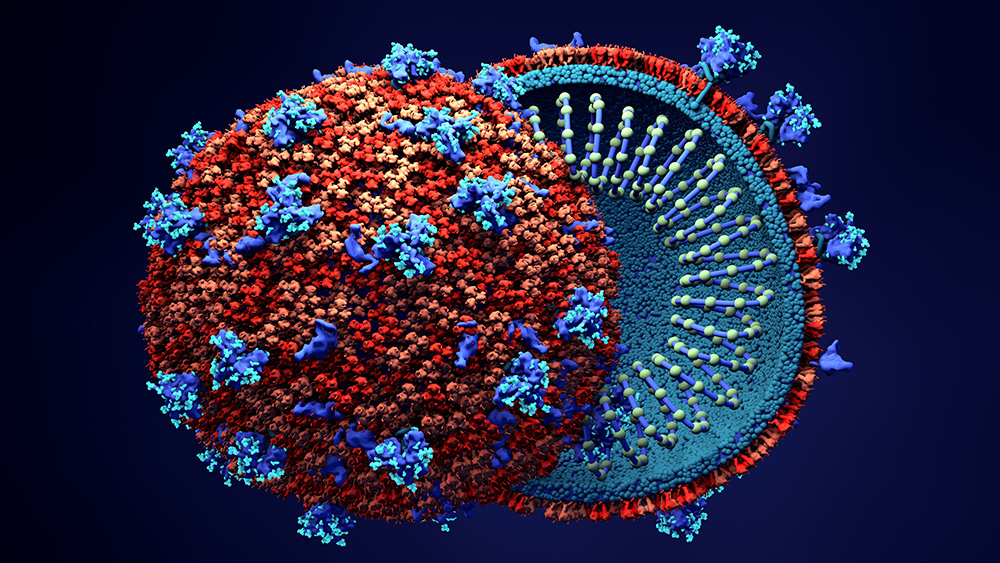This neuron-killing protein travels from the gut to the brain by hijacking a nerve
07/20/2020 / By Virgilio Marin

A recent study published in the journal Neuron found that alpha-synuclein (a-syn), a protein genetically linked to Parkinson’s disease, spreads from the gut to the brain through the vagus nerve.
Researchers at the Johns Hopkins School of Medicine in Baltimore tested a previously proposed hypothesis suggesting that the gut-brain axis is involved in the progression of Parkinson’s — a neurodegenerative disorder that affects more than 10 million people worldwide.
Their findings not only provide scientific evidence of this involvement, but also open up the possibility for a new method of suppressing some of the physical and cognitive manifestations of Parkinson’s disease.
Parkinson’s and the gut-brain axis
Shaking, stiffness and difficulty with walking, balance and coordination are some of the common signs of Parkinson’s disease. Research suggests that Parkinson’s is caused by the death or loss of function of brain neurons involved in movement. These neurons produce a chemical called dopamine, which they use to communicate with the brain region that controls movement. A decrease in dopamine levels causes movements to become delayed or uncoordinated.
One of the hallmarks of Parkinson’s disease is the buildup of a-syn proteins in the brain. Like the tau proteins in Alzheimer’s, a-syn proteins misfold and form toxic clumps called Lewy bodies. These Lewy bodies kill brain cells and contribute to Parkinson’s dementia.
In 2003, Heiko Braak, a professor at the Goethe University Frankfurt, hypothesized that a-syn proteins climb up to the brain from the gut. This hypothesis was based on Braak and his colleagues’ discovery of unusual accumulations of Lewy bodies in both the brain and the gastrointestinal nervous system of Parkinson’s patients.
The Johns Hopkins team decided to test this hypothesis by injecting a-syn into the gut of mice. They found that the protein hijacks the vagus nerve, which connects the gut to the brain and controls the functions of the gastrointestinal tract. The toxic a-syn travels up in this way until it reaches the brain, where it spreads and causes dopamine-producing neurons to degenerate. As a consequence, motor and non-motor symptoms of Parkinson’s begin to manifest.
When the researchers performed vagotomy — surgical removal of the vagus nerve — they found that it successfully stopped a-syn from wreaking havoc in the brain. This led them to believe that blocking vagal transmission pathways may be a promising strategy for preventing the progression of Parkinson’s disease.
“We now have a model that will allow us to test new therapy in all or [almost] all of the symptoms of Parkinson’s,” said Ted Dawson, one of the study authors. “I think its going to really revolutionize what we do in studying Parkinson’s disease.”
Toxic a-syn: How does it accumulate in the gut?
According to senior co-author, Han Seok Ko, the appearance of toxic a-syn in the gut is consistent with one of the earliest symptoms of Parkinson’s: constipation. However, a major question that emerged from the study was how a-syn accumulates in the gut in the first place.
Several studies have proposed an answer to this. According to one, a-syn is produced in the gastrointestinal nervous system to help fight off microbial pathogens. Another study, however, contends that certain microbes are actually responsible for the buildup of intestinal a-syn proteins. (Related: Keeping your gut flora healthy is the key to maintaining good health.)
In a different study, researchers found that transplanting fecal microbes from Parkinson’s patients into an animal model of Parkinson’s aggravated primary motor symptoms and increased a-syn aggregation in the brain. This suggests that gut microbial composition may also play a role in the development of the disease.
Another hypothesis that’s gaining traction in the scientific community is that intestinal inflammation caused by unfriendly gut microbes could lead to Parkinson’s. According to data from a recent study, the prevalence of Parkinson’s is 28 percent higher in individuals with inflammatory bowel disease than in those without. Reducing gut inflammation, on the other hand, results in a 78 percent decrease in the incidence of Parkinson’s.
While researchers are yet to determine what causes intestinal a-syn to accumulate, the huge role the gut plays in the development and progression of Parkinson’s disease is hard to deny. But recent findings on the involvement of the gut-brain axis, particularly the vagus nerve, bring scientists one step closer to finding a solution for Parkinson’s disease.
Sources include:
Tagged Under: alpha-synuclein, brain function, brain health, breakthrough, dementia, discoveries, dopamine-producing neurons, gut health, gut microbiota, gut-brain axis, Lewy bodies, motor symptoms, nervous system, neurodegenerative disease, Parkinson's Disease, research, vagus nerve




















